#asoiaf food
Text
“The swan was too rich for his taste.”
Re @jaydeewis's gorgeous artwork illustrating a meal from Tyrion XII, ACOK, @daenerysoftarth wanted to know why the roast swan appeared to be unplucked.
And that's actually one of the more interesting details found in some medieval feasts! The nobles were showing off their wealth by the way they served their food-- and one of those ways was to display meats and poultry as the animals appeared in life. You see this in the classic "whole roast pig with an apple in its mouth", but it was also frequently done with fancy fowl like peacock and swan. (Birds no peasant could ever eat-- hunting swans, for example, was poaching, a criminal activity, as even wild ones belonged to the crown.)
And so GRRM has this in ASOIAF, often referring to "peacocks served in their plumage" and similar. But how was this done? Well, it was really almost taxidermy. After the bird was slaughtered, the skin was carefully removed with the feathers intact, the flesh would be roasted, and then they would put the skin back on. (Sometimes with a prop to keep the neck straight, or for the peacock tail.) Yes, putting uncooked skin on cooked meat is terrible re food safety, and, well, this is why you hear about medieval people dying from indigestion. (But what health problems didn't they have.) Still, they were so careful with the process that the display method was called "a subtlety".
Although sometimes they had a little more care re food safety, and would make the peacock or swan meat into a pie, and attach the neck/wings/tail to the pie crust. There's actually a fascinating pair of paintings from the 1600s, after the turkey was introduced to Europe (as part of the Columbian exchange, and the topic of how a New World bird ended up being called "turkey" or "india chicken" in many languages is also fascinating but not the point right now), that shows two different but almost identically presented feast tables, one with a peacock pie and the other with a turkey pie, both "served in plumage":

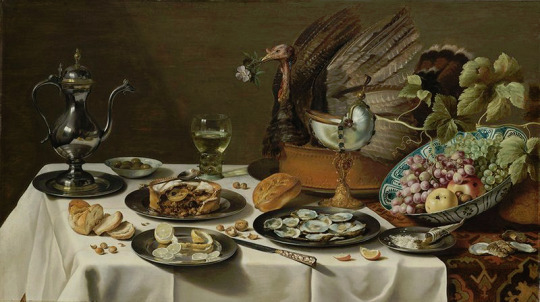
(both paintings by Pieter Claesz, 1627)
If you're interested in the subject, here's a few sources:
The Inn at the Crossroads, my favorite blog for ASOIAF food (and note if you like swans but don't want to eat a real bird, their cream swans are a delight. Also their recipe book is *chef's kiss*, literally.)
Foods of England
Historic Cookery
Coquinaria
Folger Shakespeare Library
And for more food, my asoiaf food tag has various artworks and metas and recipes. Enjoy!
#asoiaf#asoiaf meta#asoiaf food#valyrianscrolls#medieval history#poultry#swans#peacocks#turkeys#food#food tw
91 notes
·
View notes
Text
Yi Ti Cuisine:
Breakfast consists of a soup or stock, seasoned with scallions or chives, sweet basil, salt and pepper, and then vegetables like chopped carrots are added alongside egg noodles. Some choose to eat a fried egg on top of their soup, but this is usually done in the northern provinces. Drink in the summer is traditionally a heavy red tea flavored with citrus or saffron if you can get it.
Lunches differ depending on the region, in the south, a common dish is that of rice seasoned lightly with pepper and crushed dried seaweed, side of fried fish topped with chopped chives and salt and pepper, served with a dipping sauce of sesame oil. While in the north, a wheat berry and oats porridge is topped with breadcrumbs and a side of auroch meat strips grilled with salt and pepper is seen as a filling lunch.
Enjoyed for either lunch or dinner, shredded goat or lamb meat is seasoned lightly with salt and pepper and then filled into a thin grain-dough wrap, alongside finely chopped cabbage, scallion, carrots, and ginger. A sauce made of sesame oil and a dash of rice vinegar alongside small bits of crushed garlic is available to dip the roll into. Alternatively, this dish can be enjoyed in a soup, often in a chicken stock that in preparation has garlic and ginger in it, but when reaching boiling point the larger pieces are taken out. Otherwise seasoned with chopped chives and coriander, and added for texture is a small bundle of egg noodles.
For dinner, an easy to make meal is a whole chicken or pheasant gutted but not deboned, and then stuffed only halfway with a mix of scallions, leeks, ginger, salt and pepper. The chicken is marinated in a pot of its own juices and a splash of boiled water with added seasonings like soy sauce, a dash of cane sugar and rice wine. The chicken is then cooked in a covered pot over a flame. The finished product is served with boiled cabbage and carrot covered in finely chopped bits of garlic and salt to taste.
A species of small kraken makes its home in the Jade Sea. Reaching a size no longer than that of a man’s forearm and hand, the body of the kraken is only truly about a quarter of that size, with its tentacles making up the length of it. The color is a sickly pale gray-pink with yellow-green eyes, but when cooked the meat turns a clean white color. Common dinner cuisine in the south, especially in port cities, dictate that the eye and beak portion of the body be cut from it and the tentacles. The mantle of the kraken is gutted and then stuffed with crabmeat and diced shrimp. That filling is then seasoned with pepper, ginger, a pinch of cinnamon, occasionally garlic if desired, and then the open end is stuck shut with a small pick. The mantle is deep fried in an egg yolk and breadcrumb batter, alongside the tentacles seasoned only just with salt and pepper, and then plated on a dish covered with light cloth to soak up the residue oil. A dipping sauce of either rice vinegar or soy sauce with sesame seeds added in is offered, and sprinkled sparsely over the meat is shredded basil.
Tulao—a sweet, soft cheese able to be spread with a knife across pastry. Take a spoon and scoop the cheese out onto a small plate. Place beside it four pitted and divided cherries, preferably tart to bittersweet ones found in the southeastern provinces of Yi Ti, and slices of a ripe peach to surround the cheese. Drizzle over it rosehip syrup or cane syrup at choice.
During winter periods, especially in the northern provinces of Yi Ti, it is common to see people enjoying Yanmo, which is a delicious dessert made of goat milk heated and mixed with honey and waxberry syrup, for rosehip syrup is too sparse and difficult to find without scam. This is mixed until dissolved and then left to cool completely, and then poured over a heaping of shaved ice and eaten with a small spoon.
Often drunk in winter, the popular choice of drink is either fermented cows milk spiced with cinnamon and occasionally honey, or that of Pinjui. It is a mixed drink, part cider and rice wine; only made during the cold season in Yi Ti. Dried, good shaped apples still surviving after the first frost are picked from the tree and processed, then put underground for 3 months to ferment halfway. The Pinjui produced is then added to steamed rice alongside a spiced yeast-water mixture, and left to further ferment for another 4-5 months. The resulting Pinjui has a savory-sweet flavor that warms the body, with hints of caramel and a faint aftertaste of sour apple.
For the eccentric in the winter that want to fight the biting cold of the world with a chilled drink of their own, ice cider is preferable. Fresh and sweet, it offers less of the spreading warmth that Pinjui does and more of a blood pumping sensation not unlike that of chewing mint and then eating snow would.
Golden wine from Yi Ti is medium-bodied and made from the versatile Subi grape selection. Many golden wines can taste similar due to the usage of these grapes, but differ vastly in aftertaste and small flavor notes; all depending on where they are grown and processed. In the northeastern provinces it has a subtle bite of sourness. In the south to some south-western regions, the wine doesn’t hold quite the tart kick of its neighbor in the eastern provinces, it still has enough to be a refreshing summer wine served coast side. Rarely found now in the further west of Yi Ti, the few golden winemakers differ from their competitors in the other provinces with their golden wines being full-bodied, and producing a heavier coloring than the others, often becoming closer to amber than gold due to production varying wildly with how few golden winemakers are left, and how closely they hold their secrets. These golden wines often hold strong hints of safflower, and would be termed in Westeros more likely as strongwine[1] than golden wine, given their flavoring and coloration compared to that of the other wines made using Subi grapes. The largest producer of wines in Yi Ti is the Luma Province.
Strongwine = fortified wine (wine mixed with spirits like brandy)
-
to hold the tide while I wade through molasses;
sauce
40 notes
·
View notes
Note
Considering noblewomen aren’t expected to cook in Westerosi society, is it therefore implied it would be embarrassing for Lord Borrell to brag about his granddaughter being a great cook if he were talking to a proper lordly lord, and not Davos of House Seaworth? Like, the equivalent of bragging that she really knows how to dig a ditch or something?
Its more of a sign that House Borrell is pretty far down the pecking order and thus closer to smallfolk than your traditional mainland lord. Also, keep in mind, the Borrells are Sistermen. They probably don't give two f*cks what some snotty-nosed blueblood from the Vale or savage northron thinks.
Edit: Can you blame him for being proud though? Sister's stew sounds utterly delicious.
Thanks for the question, anon
9 notes
·
View notes
Text
mysaria being the one to turn back and protect rhaenyra when daemon slipped away after making big promises and not delivering whatsoever yet again. i am going insane
#asoiaf#hotd#house of the dragon#i said trust the process and what does the show deliver to me. delicious fucking food.#thank you mister condal#mysaria being a girls girl craziest plot twist of all time
4K notes
·
View notes
Text

“I urge you, bite me. Sign my death with your teeth.”
#rhaenicent#hotd#house of the dragon#rhaenyra targaryen#alicent hightower#asoiaf#fire and blood#fanart#alicent x rhaenyra#lesbian#wlw#sapphic#drawing#art#artists on tumblr#doodles#something about alicent worshipping rhaenyra.....some good fkn food
401 notes
·
View notes
Text
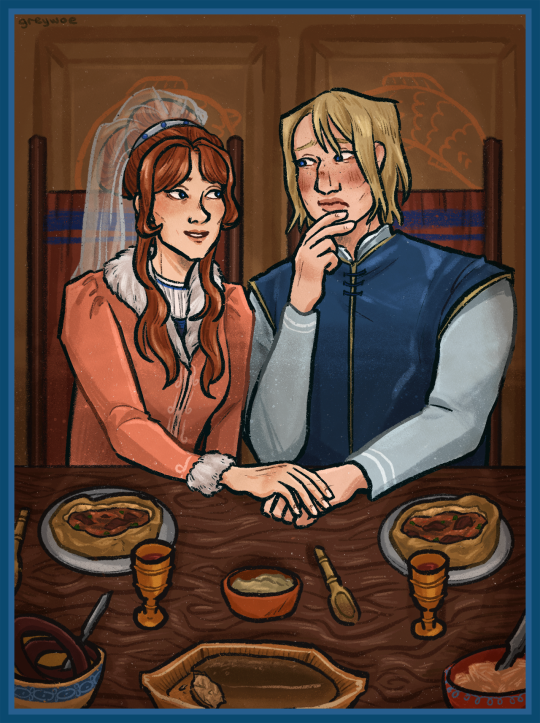
Brienne said, "I remember a woman... she came from some place across the narrow sea. I could not even say what language she sang in, but her voice was as lovely as she was. She had eyes the color of plums and her waist was so tiny my father could put his hands around it. His hands were almost as big as mine." She closed her long, thick fingers, as if to hide them.
"Did you sing for your father?" Catelyn asked. Brienne shook her head, staring down at her trencher as if to find some answer in the gravy.
"For Lord Renly?"
The girl reddened. "Never, I... his fool, he made cruel japes sometimes, and I..."
"Some day you must sing for me."
#asoiaf#asoiaf fanart#catelyn stark#catelyn tully#brienne of tarth#my drawings#acok#love them. and also#FOOD#rewatching my fav show about historical food over and over again paid off i guess#anyway it's the biggest snow storm over here you can't even go to work#no need to wait for the windsof winter they are HERE. walking the dogs was an ordeal#now i know how campstannis felt in adwd.... ok i'll stop it with the unnecessary referencing. anyway happy new year!
542 notes
·
View notes
Text

i know we’re all so excited to see rhaenyra and the blacks go batshit on the greens, but i can’t help but sit here and think about rhaenyras mental state right now. i cannot imagine the anguish and torment her mind must be going through. the way she would hold lucerys hand everywhere they went together. her sweet boy. my heart breaks for her
#hotd#fire and blood#rhaenyra targaryen#targaryen#lucerys targaryen#lucerys velaryon#house of the dragon#asoiaf#rhaenyra#team black#the blacks#prince lucerys#hotd lucerys#food for thought
130 notes
·
View notes
Note
People have different levels of tolerance for it, but wondering if there was there ever a long passage in the books describing some meal where you just went to yourself, "OK George, we get it and can we just move it along."
Well, I grew up on the food porn in Redwall novels, which Brian Jacques wrote as essentially a tone poem for blind children that he was reading to in hospital. So I have an unusually high tolerance for it, so I’ve never had a problem with it.
157 notes
·
View notes
Text
some descriptions under the cut :)
WINTERCAKE: "The taste of wintercake filled his mouth again, rich with ginger and pine nuts and bits of cherry, with nahsa to wash it down, fermented goat's milk served in an iron cup and laced with honey."
SISTER'S STEW: "The beer was brown, the bread black, the stew a creamy white. She served it in a trencher hollowed out of a stale loaf. It was thick with leeks, carrots, barley, and turnips white and yellow, along with clams and chunks of cod and crabmeat, swimming in a stock of heavy cream and butter. It was the sort of stew that warmed a man right down to his bones, just the thing for a wet, cold night. Davos spooned it up gratefully."
SNAILS: "Snails in honey and garlic. Sansa had never eaten snails before; Joffrey showed her how to get the snail out of the shell, and fed her the first sweet morsel himself."
BOWL OF BROWN: "...So thick you could stand your spoon up in the bowl, with chunks of this and that."
#asoiaf#polls#maybe the abundant food descriptions are for ME to salivate over#not sure on how kosher or halal this food is. the boar definitely isnt
142 notes
·
View notes
Text
My favorite chapter sequence in A Storm of Swords so far on this reread: Bran III -> Jon V.
They're both at Queenscrown.
Bran explains the Gift and why it's called that. There are two gifts to the Night's Watch: Brandon's Gift and the New Gift (Queen Alysanne's gift).
Bran wargs into Summer.
Jon thinks about Ned's plan to settle the Gift.
"... a dream for spring ..."
Jon thinks about how he might have been chosen to hold a tower in Ned's name, if winter had come and gone faster.
Ygritte: "I'm half a fish, I'll have you know." 🤭
Jon explains why it's called Queenscrown.
Ygritte asks if a queen lived there, and Jon says: "A queen stayed there for a night." 🤭
That queen was Alysanne, married to her brother Jaehaerys.
"I see a crow and a crow wife."
Summer, who Bran was warging into when we left his POV, saves Jon by attacking the wildlings when Jon can't kill the old man.
#so many goodies#thank you grrm for the food#a storm of swords#nothing new here i'm just having a good time#bran stark#jon snow#asoiaf foreshadowing#thinking about asoiaf#do i tag this full on jonsa or just#jonsa adjacent
50 notes
·
View notes
Text


shrip scapi wrapped: some favs of 2022
#brienne of tarth#jaime lannister#valyrianscrolls#asoiaf#my art#if I was being honest alia atreides would be 1#but I’m being merciful and not subjecting everyone to my backlog of dune art#these are just headshots for my use more than anything else#eventually I want to draw other asoiaf characters. eventually#anyways essay in the tags over#happy new year I got FOOD POISONING
545 notes
·
View notes
Text
GRRM, on the question of the agriculture in the North of Westeros
SJ: From what we’ve seen in the books so far, it looks like even in summer the snow covers most of the lands in the North, and it surely does cover all in winter, doesn’t it?
GRRM: I wouldn’t say that snow “covers most of the lands” in summer. Rather than they have occasional summer snows. It never gets really hot in the north, even in summer, but it’s not icy and snowing all the time either.
Winter is a different tale.
SJ: But quite a lot of people are living there. What do they eat?
GRRM: A lot of food is stored. Smoked, salted, packed away in granaries, and so on. The populations along the coast depend on fishing a great deal, and even inland, there is ice fishing on the rivers and on Long Lake. And some of the great lords try and maintain greenhouses to provide for their own castles… the “glass gardens” of Winterfell are referred to several times.
But the short answer is… if the winter lasts too long, the food runs out… and then people move south, or starve…
SJ: Are there some areas without snow, which are suitable for agriculture, or are there significant temperature changes inside the “bigger seasons”? To grow a harvest, at least a couple of months’ time of warm temperature (15-20 degrees by Celsius) is needed. Is it available in the North?
GRRM: Sometimes. It is not something that can be relied on, given the random nature of the seasons, but there are “false springs” and “spirit summers.” The maesters try and monitor temperature grand closely, to advise on when to plant and when to harvest and how much food to store.
SJ: And what happens when a winter comes - five, six years long?
GRRM: Famine happens. The north is cruel.
SJ: Surely, the import of grain from the South alone can’t cover the North’s needs. And, by the way, does it snow in the South during the winter?
GRRM: Yes, some times, in some places. The Mountains of the Moon get quite a lot of snow, the Vale and the riverlands and the west rather less, but some. King’s Landing gets snow infrequently, the Storm Lands and the Reach rarely, Oldtown and Dorne almost never.
–June 21, 2001
For more on the seasons and the world of ASOIAF, please see this post.
#asoiaf#asoiaf meta#valyrianscrolls#asoiaf worldbuilding#the north#westeros#asoiaf seasons#winter#agriculture#grrm#asoiaf food#so spake martin#winter is coming#if you get pedantic on winter in the worldbuilding please be aware that the question was asked and grrm answered it well before you ever did#and of course y'know suspension of disbelief is also a thing but that's probably asking for too much from nerds isn't it lol
210 notes
·
View notes
Text
monty python adaptation of ASOIAF that lives in my head has a running gag of jamlan getting gratuitous closeup shots while plot relevant things happen just off camera in order to maintain the spirit of GRRM occasionally taking a paragraph to describe jaime’s outfit. like cersei’s demanding that they kill sansa’s direwolf and it’s just a long irrelevant shot of him cleaning his nails
#monty python asoiaf that lives in my head has brought me much joy lately#every battle is communicated by jump cuts to people looking beat up like they did at the end of holy grail#all the gore effects are like. paper mache and red food coloring.#winterfell is just the red keep set with fake snow#asoiaf
28 notes
·
View notes
Note
In honour of George’s cookbook.... Food headcannons please! I’d love you to do one of the free cities like Myr
Order up while we wait another ten years for Winds… 👩🍳🥘🧆🍛


Myr, the fertile heel of Essos, reminds me a lot of Spain and the Iberian Peninsula in general. A port city with a warm climate good for growing. This means lots of staples like rice and other grains, and plentiful olives/olive oil as well. Seafood is a huge part of the diet too. This leads to large fried grain dishes topped with mollusks or fish or shrimp (like Paella), and versatile seafood soups and stews with plenty of spices being quite popular in Myr.
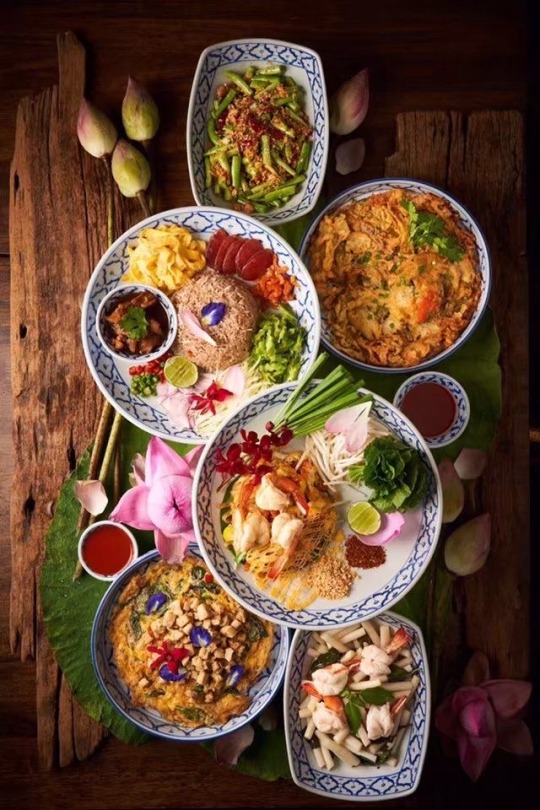
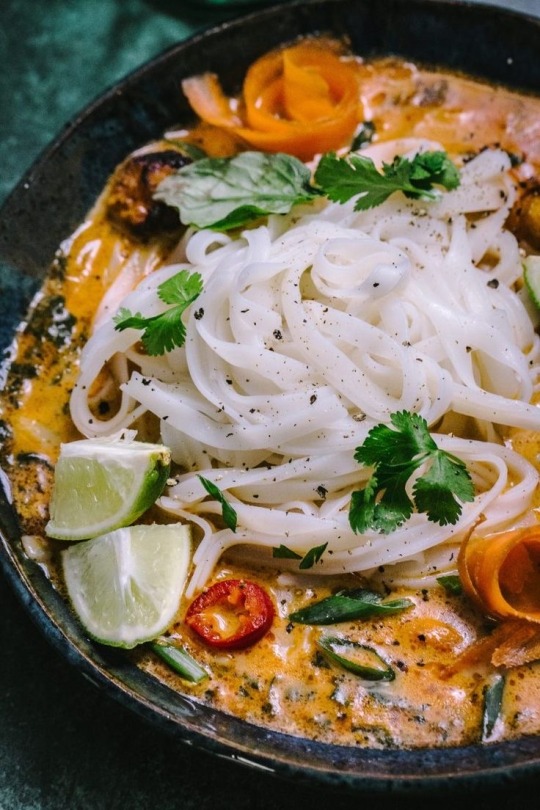
Volantis’ climate reminds me of Thailand, Vietnam, and other surrounding SEA countries, so let’s say the food is similar too. Plenty of rice and noodles to pour your main dishes on top of. Multiple courses consisting of spicy stews/curries, fried meat and veggie dishes, fish platters, and gelatinous rice dishes. Cold noodles and other chilled foods are very popular too, due to the relief it provides from the sticky heat
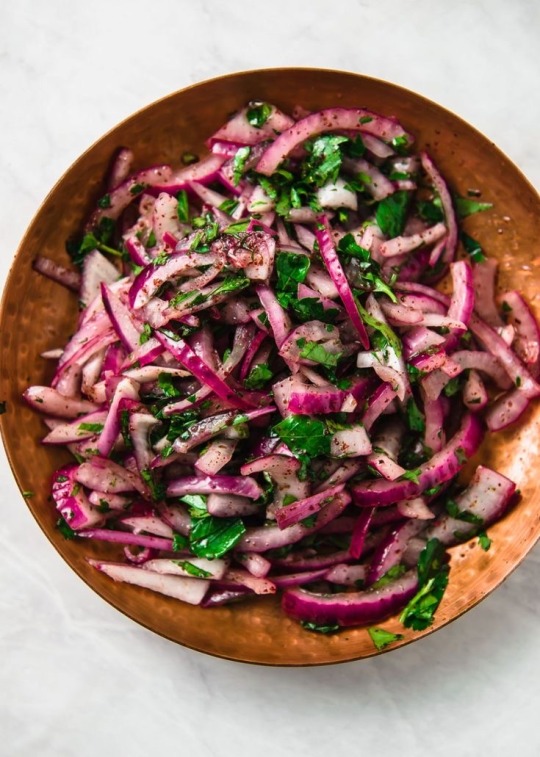

Lys is kind of a a mishmash of the Greek islands, so let’s go with classic Mediterranean foods. The island is very fertile, so I think they like to make use of their abundance of veggies. Cold salad-like dishes are very popular, drenched in oil and spices. Cooked vegetables are usually the main course, often stuffed with rice, chicken, or other filling foods. There are also dips and sauces bc they seem like dips and sauces ppl.
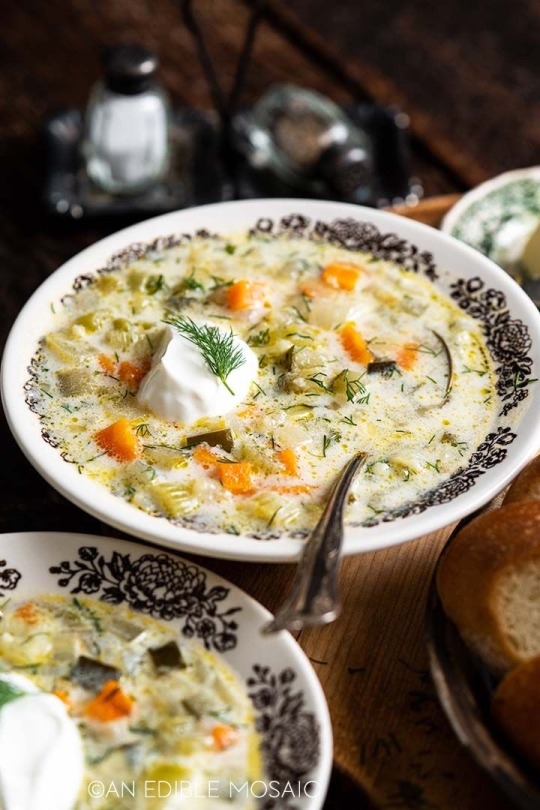
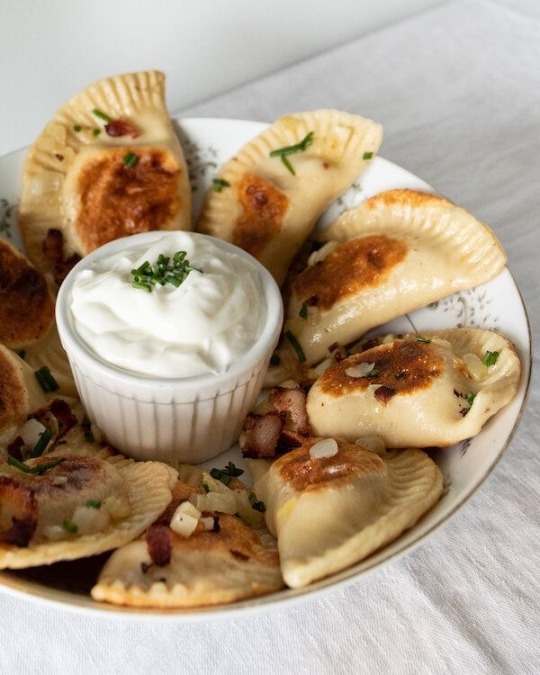
I know Braavos is supposed to be like Venice but it’s also cold and wet there so…✨Polish and general North Eastern European food✨ but it works hear me out. Multicultural blends of vegetable and fish stews that have changed over time to become uniquely Braavoisi. Veggies/fish/meet/fruit/literally anything wrapped in dough bc things wrapped in dough surpass borders. Overall just a mash of differing cultures the city was founded on plus the environment in which they live. (Shoutout @ludcake for the help 🫶)


Croatian food is notably heterogeneous so that’s why I think it’s perfect for Pentos. There’s no one major inspiration for its food, being a major trade city, its people take knowledge from whichever foreigner has pulled into port and uses it for their cuisine. Flavorful and random seafood stews. Simple cold salads with vinegar and potatoes. Very daring raw octopus dishes. The list goes on
#asoiaf#me when I put together cultural connections like location and food 🫶🕺✨#love when environment influences culture and I am aware of it
78 notes
·
View notes
Note
Hi! What asoiaf YouTubers do you watch?
i used to be more into youtube than i currently am i just don’t have any time (employed.) i thought alt shift x and glidus were pretty good and did not really like preston jacobs. if anyone knows ANY women or gay people asoiaf youtubers please let me know it’s dire out there
76 notes
·
View notes
Text
Among other reasons, George R.R. Martin implies that he includes detailed food passages in his writings to stretch out scenes and facilitate dialogue. Is he implying that The Winds Of Winter will feature nonstop food orgies? 😋
When it comes to Game of Thrones author George R.R. Martin's writing, there is one fairly common critique of sorts: the author often includes "gratuitous" food scenes in his work, with some critics even commenting that his books might not be quite as long if it weren't for the various "gratuitous" feasts — among other so-called excess scenes — packed in them. It's not criticism that Martin is bothered by, but now he's explaining why there is so much food in his work. In his foreword for the new The Official Game of Thrones Cookbook (via Polygon), Martin says that, for him, the food matters because the journey is as important as the destination.
"When used in the context of literary criticism, 'gratuitous' usually translates to 'more than I wanted' or 'did not advance the plot' And you know, often that is true," Martin writes. "Was it necessary for me to mention that the minor knight who just entered the lists bore seven golden hedgehogs on a field of dark green? In that sex scene, couldn't I just have tumbled them into bed and cut to 'the next morning'? And the feasts, oh those feasts, surely the only thing that mattered was what the characters were saying, not the honey-roasted duck they were eating as they said it? Well, no. Not for me."
Maybe by now he feels that readers are expecting such passages. 🤔
He continued, "It's not the destination that matters to me, it's the journey. I have been a voracious reader for as long as I can remember. A reader of fiction, specifically. Fiction is not about getting from point A to point B as fast as possible. It can educate, but it is not educational at heart. For that, nonfiction is infinitely superior. Fiction is about emotion. The heart, not the head. Fiction gives us vicarious experience. It takes us beyond ourselves and the world around us."
Martin goes to write that he wants readers to "live with my story, not just read it. When they sit down at my table, I want them to taste the food."
I wonder if the length of the food passages increases whenever GRRM is hungry when he writes.
#game of thrones#house of the dragon#asoiaf#food#george r.r. martin#grrm#the official game of thrones cookbook#gra o tron#trône de fer#hra o trůny#kampen om tronen#isang kanta ng yelo at apoy#a guerra dos tronos#juego de tronos#trono di spade#taht oyunları#valtaistuinpeli#trò chơi của ngai#гра престолів#pemainan takhta#왕좌의 게임#权力的游戏#ゲームの玉座#صراع العروش#गेम ऑफ़ थ्रोन्स#গেম অব থ্রোনস#تخت کے کھیل#சிம்மாசனத்தில் விளையாட்டு#игра престолов#משחקי הכס
50 notes
·
View notes